Trở Về Trang Gốc Lịch Sử Việt Nam
Lịch Sử Việt Nam - phần 11
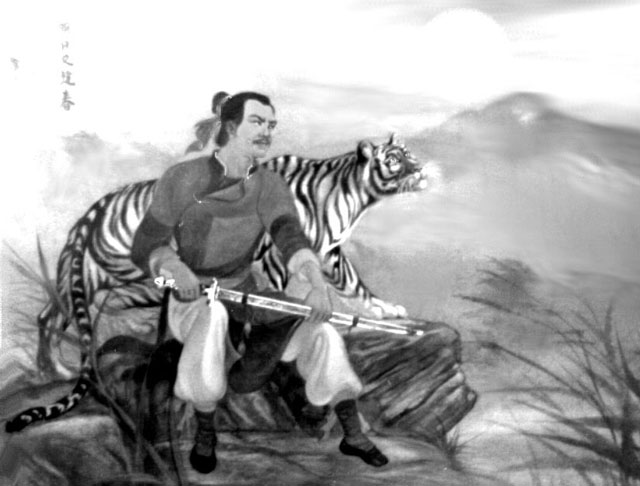
101. Ông Hoàng Hoa Thám, hùm thiêng Yên Thế: Ông Hoàng Hoa Thám người tỉnh Bắc Giang. Năm 1886, ông lập chiến khu Yên Thế, xây đồn trại, mua súng ống chống Pháp, nên ông còn có danh hiệu là Hùm Thiêng Yên Thế. Ông gây nhiều thiệt hại cho giặc Pháp ở vùng Nhã Nam, Yên Thế, Tam Đảo. Năm 1913, ông bị tên Lương Tam Kỳ làm phản giết ông để lãnh thưởng của giặc Pháp.
Mr. Hoang Hoa Tham, the Tiger of Yen The: Mr. Hoang was a leader at Bac Giang. In 1886, he and his soldiers built the Yen The fort, bought guns and ammunition to fight the French. He caused big problems for the French in the areas of Nha Nam, Yen The, Tam Dao. In 1913, Luong Tam Ky, a traitor, killed him to get award money from the French.
M. Hoàng Hoa Tham, le Tigre de Yên Thê: M. Hoàng Hoa Tham fut un chef de file à Bac Giang. En 1886, lui et ses soldats construisirent le fort Yên Thê, achetèrent des fusils et des munitions pour combattre les français. Ils causèrent de gros problèmes aux français dans les régions de Nha Nam, Yên Thê, Tam Dao. En 1913, Luong Tam Ky, un traître le tua pour obtenir une récompense en argent des français.
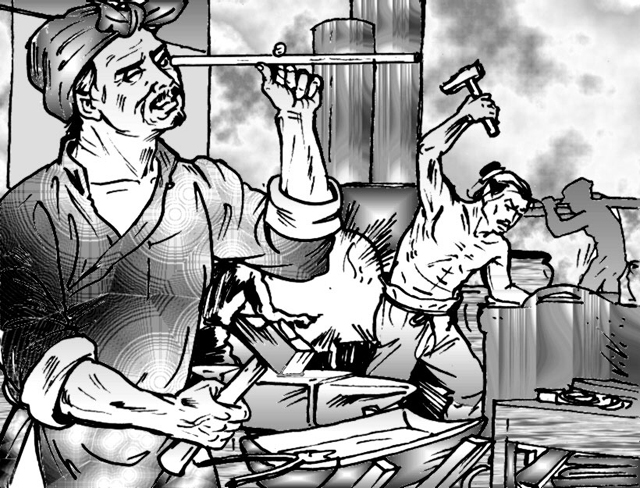
102. Ông Cao Thắng đúc súng: Ông Cao Thắng là một bộ tướng cüa ông Phan Ðình Phùng có tài rèn và đúc súng. Ông đúc súng theo kiểu 1874 cüa Pháp để trang bị cho nghîa binh. Tài nghệ cüa ông cũng được người Pháp kính trọng. Trường Kỹ Thuật Sài gòn được đặt tên là Trường Kỹ Thuật Cao Thắng để vinh danh ông.
Mr. Cao Thang crafted guns: Mr. Cao Thang was a follower of hero Phan Dinh Phung. Cao was tallented in forcing and crafting guns. He made guns following the French 1874 style to arm the patriots. His talent was greatly respected by the French. The Technical High School in Saigon was named Cao Thang to honor him.
M. Cao Thang concepteur de canons: M. Cao Thang fut un adepte du héros Phan Dình Phùng. Ce fut un home de talent pour concevoir et fabriquer des armes à feu. Il fit des fusils suivant le modèle français de 1874 pour armer les patriotes. Son talent fut très reconnu par les français. Cao Thang fut choisit comme nom de l’Ecole Supérieure Technique de Saigon en son honneur.
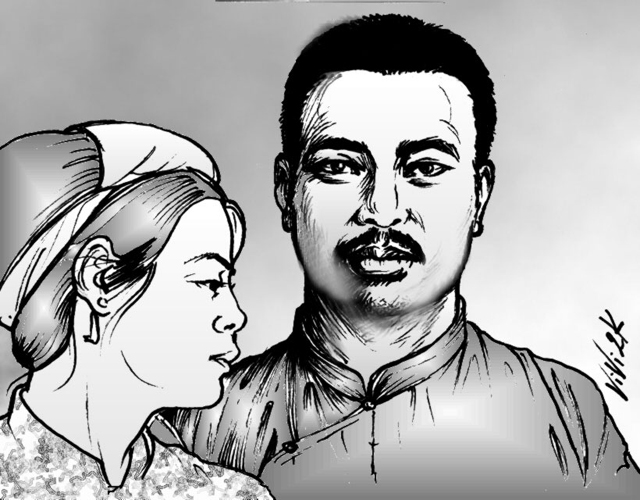
103. Anh hùng Nguyễn Thái Học: Là một sinh viên trường Cao Đẳng Thương Mại Hà Nội. Ông thành lập Việt Nam Quốc Dân Đảng, chủ trương bạo động chống Pháp, được sự tham gia đông đảo của giới thanh niên. Cuộc tổng khởi nghĩa năm 1930 bị thất bại, ông cùng 12 đồng chí bước lên máy chém ở Yên Bái. Trước khi chết ông bình tĩnh nhìn dân chúng, mỉm cười rồi hô to: "Việt Nam Muôn Năm".
Hero Nguyen Thai Hoc: Nguyen was a student of Business College of Hanoi. He founded the Vietmese Nation-People Party who used violence to fight the French. The party gained broad support from Vietnamese youths. The failure of the party’s rising up in arms in 1930 brought Hoc and his 12 comrades to the decap machine at Yen Bai. Before the death, Nguyen Thai Hoc calmly looked at his people, smiled and shouted “Vietnam For Ever”.
Le héro Nguyên Thai Hoc: Nguyên Thai Hoc fut un étudiant de l’Ecole de Commerce de Hà Nôi. Il fonda le Parti Nationaliste Niêtnamien qui utilisa la violence pour combattre les français. Le parti gagna un large soutien des jeunes viêtnamiens. L'échec du soulèvement armé de 1930 eut pour résultat la décapitation de Hoc et de ses 12 compagnons à Yên Bai. Avant de mourir, Nguyên Thai Hoc regarda tranquillement son peuple en souriant et cria « Le Viêt-Nam pour toujours ».
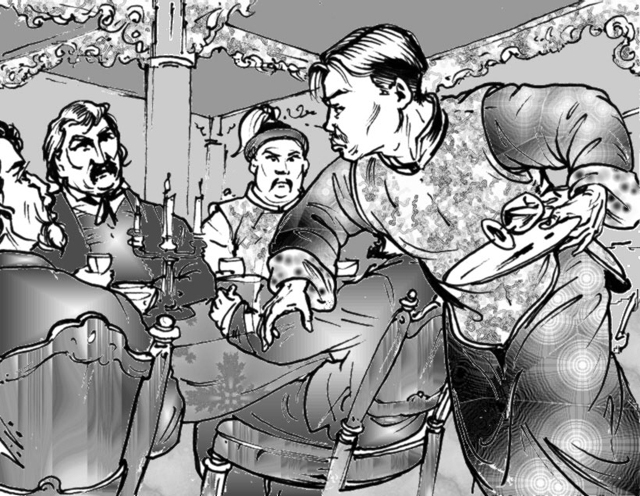
104. Anh hùng Phạm Hồng Thái và tiếng bom Sa Diện: Năm 1923, quan Toàn quyền Merlin đi công tác bên Nhật về đến Sa Diện, Quảng Châu, và được đãi tiệc. Ông Phạm Hồng Thái thừa cơ ném bom vào bàn tiệc, nhưng Merlin chỉ bị thương không chết. Bị rượt đuổi, ông Phạm Hồng Thái nhảy xuống sông chết. Ông được các nhà cách mạng Trung Hoa kính trọng chôn ông chung với 72 liệt sĩ của họ tại Hoàng Hoa Cương, tỉnh Quảng Châu.
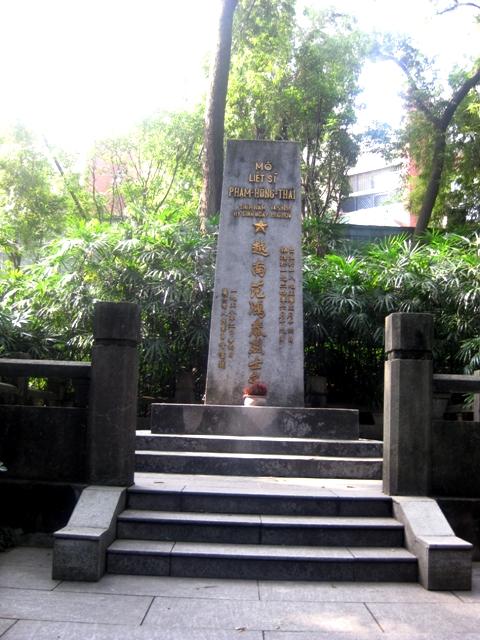
Mộ phần anh hùng Phạm Hồng Thái tại Hoàng Hoa Cương, Trung Hoa.
Hero Pham Hong Thai: In 1923, the Indochine Ambassador Merlin was invited to a feast when he stopped at Quang Chau on his way back from Japan. Mr. Pham Hong Thai throwed a bomb to Merlin’s table and wounded him. Being chased, Pham Hong Thai jumped into a river and got drowned. The Chinese revolutionists respected him, buried Thai with their 72 heroes at Hoang Hoa Cuong, Quang Chau.
Le héro Pham Hông Thai et sa bombe à Sa Diên : En 1923, l’ambassadeur d'Indochine Merlin était invité à une fête lors de son arrêt à Quang Châu sur le chemin de son retour du Japon lorsque M. Pham Hông Thai jeta une bombe à sa table et le blessa. Etant pourchassé, Pham Hông Thai se jeta dans une rivière et se noya. Les révolutionnaires chinois qui le respectaient, l’ensevelirent avec leurs 72 héros à Hoàng Hoa Cuong, Quang Châu.
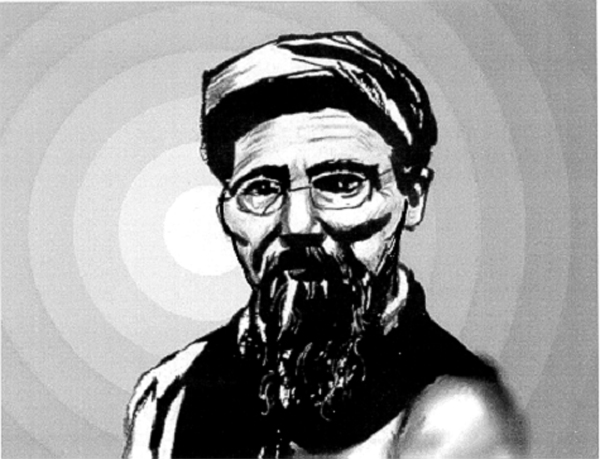
105. Cụ Phan Bội Châu: Cụ Phan là một nhà cách mạng yêu nước, nhận thấy súng đạn thô sơ không chống nổi quân Pháp với vũ khí tối tân, và thấy người Nhật canh tân sứ xở mà trở thành cường thịnh. Cụ Phan đi từ Bắc chí Nam tìm thanh niên giỏi, yêu nước, gởi sang nước Nhật học. Cụ lập hội Duy Tân ở Nhật, lập Việt Nam Quang Phục hội ở Trung Hoa. Phong trào của cụ có tổ chức quân đội yểm trợ kháng chiến trong nước. Vì tham tiền và muốn triệt hạ những người yêu nước không theo tổ chức Cộng Sản, Hồ Chí Minh của đảng Cộng Sản Việt Nam bán tin tức của cụ cho Pháp. Cụ bị Pháp bắt giam ở Huế.
Mr. Phan Boi Chau: Mr. Phan is a respectable patriot. He recognized that the Vietnamese with simple weapons were not strong enough to fight against the French who were much better armed. He also learned that with modernization, the Japanese had built up a strong country. Mr. Phan went from North to South, looking for smart patriots to send them to study at Japan. He built the Duy Tan association at Japan, and the Viet Nam Quang Phuc association in China. The association had soldiers to support the Vietnamese inside the country. Since having different goals of fighting, Ho Chi Minh, the Vietnamese communists sold Mr. Phan’s news to the French for money. Mr. Phan was arrested and imprisoned at Hue.
M. Phan Bôi Châu: M. Phan Bôi Châu fut un patriote respectable. Il reconnut que les Viêtnamiens avec de simples armes n'étaient pas assez forts pour lutter contre les français qui étaient beaucoup mieux armés. Il apprit également qu’avec la modernisation, les Japonais avaient construit un pays fort. M. Phan Bôi Châu alla du nord au sud à la recherche d’habiles patriotes pour les envoyer étudier au Japon. Il créa l'association Duy Tân au Japon, et l’association Viêt-Nam Quang Phuc en Chine. L'association avait des soldats pour soutenir les viêtnamiens dans le pays. Puisqu’ils avaient des objectifs différents de combats, Hô Chi Minh du parti communiste viêtnamien vendit des informations de M. Phan Bôi Châu aux français pour de l'argent. M. Phan Bôi Châu fut arrêté et emprisonné à Huê.
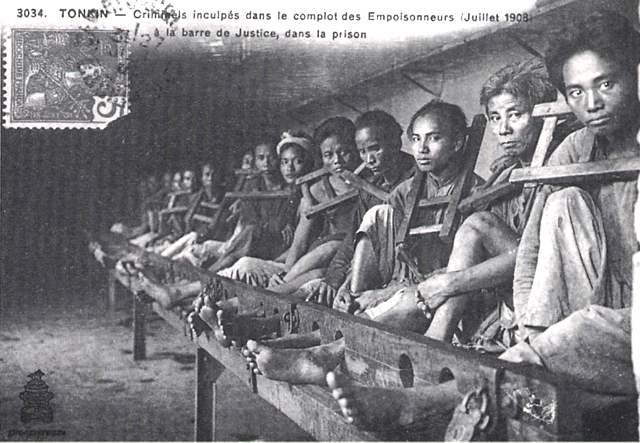
Tù nhân Việt Nam. Ảnh chụp năm 1908.
106. Lòng yêu nước của dân tộc Việt: Trải qua mấy ngàn năm lịch sử, dân tộc ta phải liên tiếp nổi lên chống lại sự xâm lăng đô hộ của người Tàu. Nay người Pháp lại xâm chiếm nước ta. Lòng yêu nước của người dân được khơi dậy mỗi ngày một nồng nàn, sự uất ức đau khổ mỗi ngày một tăng. Khắp mọi nơi từ Bắc chí Nam, các bậc anh hùng hào kiệt liên tục đứng lên chống Pháp dù rằng sức mạnh vũ khí chênh lệch quá xa. Sau cùng dân tộc ta đánh bại quân Pháp năm 1954, mang lại độc lập cho đất nước. Tiếc thay lòng yêu nước của dân ta bị lợi dụng bởi đảng Cộng Sản Việt Nam. Đảng Cộng Sản dựa vào một chủ thuyết ngoại lai, tàn nhẫn, hận thù, xa cách với tình tự và đặt tính bao dung của dân tộc Việt và không hoạt động cho phúc lợi của dân tộc Việt Nam. Họ dùng bạo lực để đàn áp dân tộc ta, kềm hãm mọi sự tiến bộ của đất nước. Dân ta lại phải cúi đầu phục vụ, làm tôi mọi cho một nhóm nhỏ hung ác là đảng Cộng Sản, đang thay phiên nhau bóc lột và hành hạ chính đồng bào của họ.
The Patriotism of the Vietnamese People: Over five thousand years of history, Vietnamese have repeatedly risen up to fight against their Chinese oppressors. When the French invaded our country, they also caused great sufferings among our people. Being attacked by others always fires up our patriotic feelings. When the French oppressed our country, brave Vietnamese from everywhere, from the North and the South, stood up to fight back, even though our weapons were much simpler than those of the French. Finally, however, our people succeeded in defeating the French army in 1954 and obtained independence for our country. Regrettably, this independence came at the cost of our freedom. The communist party exploited the patriotism of the Vietnamese in order to impose a foreign theory of government that is not suited to our Vietnamese culture and emotion. The communists do not have the interests of the Vietnamese people in they mind. They use violence force to rule our people and to obstruct the economic, social, and political advancement of our country. Again, Vietnamese find themselves enslaved to a small group of cruel people, and controlled by foreign ideas and selfish motives.
Le patriotisme du peuple viêtnamien: Durant plusieurs milliers d’années d'histoire, les viêtnamiens se sont maintes fois soulevés pour lutter contre leurs oppresseurs chinois. Quand les français envahirent notre pays, ils causèrent également de grandes souffrances parmi notre peuple. Les attaques venant de l’extérieur ont toujours réveillé nos sentiments patriotiques. Quand les français opprimèrent notre pays, les viêtnamiens courageux se levèrent de partout, du Nord au Sud, pour le défendre, même si nos armes étaient beaucoup plus rudimentaires que celles des français. Enfin, notre peuple réussit à vaincre l'armée française en 1954 et obtint l'indépendance de notre pays. Malheureusement, cette indépendance est venue au prix de notre liberté. Le parti communiste a exploité le patriotisme des viêtnamiens afin d'imposer une théorie étrangère de gouvernement qui n'est pas adaptée à notre culture viêtnamienne et nos sentiments. Les communistes ne pensent pas dans leur esprit aux intérêts du peuple viêtnamien. Ils utilisent la force violente pour gouverner notre peuple et pour entraver le progrès économique, social et politique de notre pays. Encore une fois, les viêtnamiens se retrouvent asservis à un petit groupe de gens cruels et contrôlés par des idées étrangères et des motifs égoïstes.
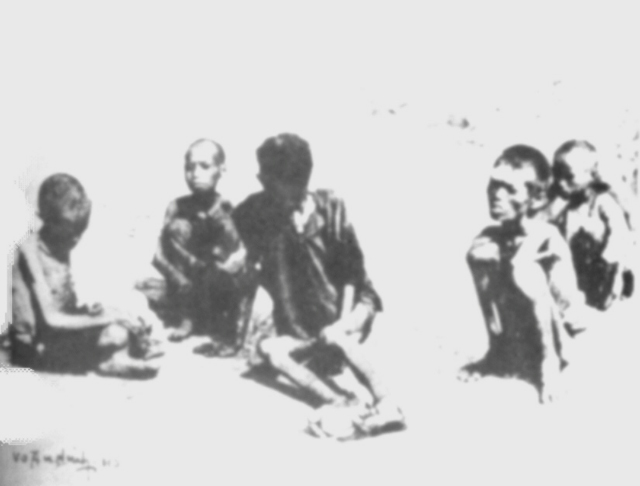
107. Tình hình Việt Nam vào các năm 1930-1945: Từ năm 1884, Pháp bảo hộ toàn cõi Việt Nam. Dân chúng Việt Nam ở khắp nước liên tục nổi lên chống Pháp. Tuy nhiên, chưa có lực lượng yêu nước nào đủ sức đánh bại quân Pháp. Năm 1939, tại Âu Châu, Đức xâm lăng và đánh chiếm nước Pháp. Tại Á Châu, Nhật Bản là đồng minh của Đức, bắt đầu tiến quân vào Đông Dương từ năm 1940. Nhật Bản vẫn để Pháp cai trị Việt Nam, và dùng nhà cầm quyền Pháp nhằm phục vụ cho nhu cầu lương thực của quân đội Nhật Bản. Khi Nhật Bản tấn công Hoa Kỳ tại Trân Châu cảng ngày 7-12-1941, Hoa Kỳ gia nhập khối Đồng minh, tuyên chiến với Nhật Bản và Đức. Nhờ thế khối Đồng minh càng ngày càng thắng thế và Đức đầu hàng Đồng minh ngày 7-5-1945.
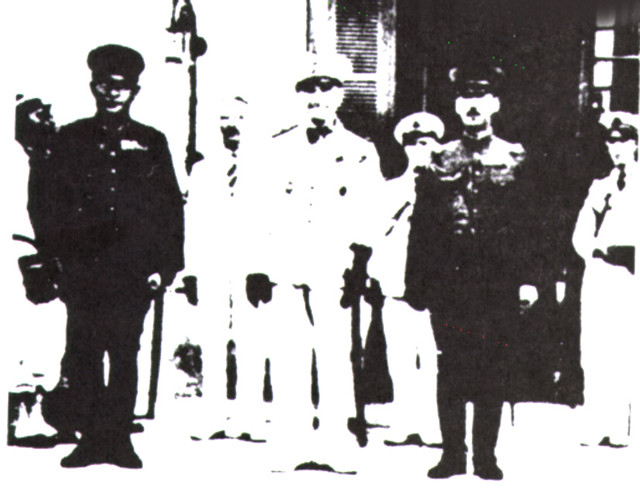
Lúc đầu, chính phủ Pháp tại Đông Dương thuộc quyền kiểm soát của chính phủ Pétain là chính phủ bị Đức khống chế. Khi quân Đức yếu dần, quân Nhật lo sợ Pháp ở Đông Dương vâng lệnh Chính phủ lâm thời Pháp dưới quyền của De Gaulle, phản công. Nhật tổ chức cuộc hành quân Meigo ngày 9-3-1945 , lật đổ chính phủ Pháp tại Đông Dương, trao trả độc lập cho Việt Nam . Vua Bảo Đại uỷ thác cho Trần Trọng Kim thành lập chính phủ. Vào năm 1945, trong khi cả người Pháp lẫn người Nhật thu mua lúa thóc của dân Việt để đốt lò hơi chạy máy điện, hai triệu con dân nước Việt phải chết đói la liệt trên khắp mọi miền, còn gọi là trận đói Ất Dậu.
Sau đó, Nhật cũng thất trận, đầu hàng Đồng minh ngày 14-8-1945 . Lúc đó, tại Đông Dương, tình hình rất lộn xộn:
- Thứ nhất, quân đội Nhật buông súng đầu hàng.
- Thứ hai, các đảng phái chính trị nổi lên tranh đấu giành độc lập.
- Thứ ba, đảng Cộng Sản Đông Dương và mặt trận Việt Minh nhanh tay cướp chính quyền ở Hà Nội và ở Sài Gòn.
- Thứ tư, vua Bảo Đại thoái vị ở Huế, chính phủ TrầnTrọng Kim sụp đổ.
- Thứ năm, Pháp đưa quân trở lại Đông Dương, có sự dàn xếp của đảng Cộng Sản Việt Nam
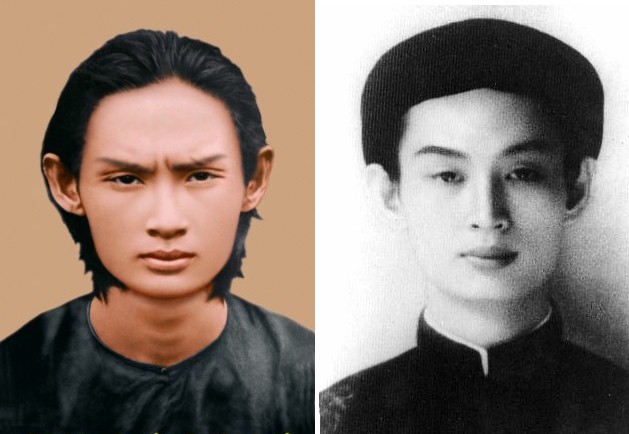
Đức Hùynh Giáo Chủ và Đạo Phật Giáo Hoà Hảo: Thầy Huỳnh Phú Sổ sinh ngày 25 tháng 11 năm 1920, trong một gia đình nông dân trung lưu. Năm 1939, Thầy Huỳnh Phú Sổ thành lập giáo phái Phật Giáo Hòa Hảo tại tỉnh Châu Đốc, nay là tỉnh Long Xuyên, lúc Ngài mới được 19 tuổi. Đức Thầy Huỳnh Phú Sổ vừa thuyết pháp, vừa sáng tác nhiều bài thơ lục bát có vần điệu rất hay, dể nhớ, dạy người đời tu hành dựa trên giáo lý nhà Phật. Bài giảng của Đức Thầy đơn giản dể hiểu, ca ngợi tình yêu non sông, tình yêu cha mẹ, tình yêu Phật pháp nên rất dễ phổ biến. Theo Ngài con người thọ 4 thứ Ân: Ân Tổ tiên Cha mẹ, Ân Đất nước, Ân Tam bảo, Ân Đồng bào và Nhân loại. Vì thế phải cố ăn ở ngay thẳng để đáp đền công ơn Cha mẹ, Tổ tiên, Phật pháp và ơn Đất Nước, Nhân Loại.
Vì lý thuyết của đạo hợp với tình tự dân tộc, đạo Phật Giáo Hoà Hảo phát triển nhanh chóng, làm cho chính quyền Pháp lo ngại. Pháp bắt Ngài giải qua nhiều tỉnh khác nhau: Cần Thơ, Sài Gòn, Bạc Liêu và sau cùng Ngài được đưa về sống ở Sài Gòn từ năm 1942. Nơi đâu Ngài cũng được dân chúng ủng hộ, và đạo Phật Giáo Hoà Hảo vẫn được phát triển. Chủ trương của Đức Hùynh Giáo Chủ là Đoàn Kết Dân Tộc và thiết lập một nước Việt Nam Dân Chủ. Ngài chủ trương đặt quyền lợi của đất nước lên trên quyền lợi của cá nhân và đảng phái. Vì đạo Phật Giáo Hoà Hảo có ảnh hưởng lớn ở miền Nam và vì chủ trương của đạo đi ngược lại nguyên tắc độc tài đảng trị của đảng Cộng Sản Việt Nam, Cộng Sản giết hại nhiều nhân vật quan trọng của Phật Giáo Hoà Hảo và tấn công Đức Hùynh Giáo Chủ nhiều lần. Khi xảy ra sự xô xát giữa lực lượng Phật Giáo Hoà Hảo và Việt Minh tại Sa-Đéc, ngày 16-4-1947, Việt Minh mời Đức Huỳnh Giáo Chủ đến họp để giải quyết. Trong tinh thần đoàn kết dân tộc, ngài vẫn đến họp. Khi ngài đến họp, Việt Minh bất thần tấn công và Đức Huỳnh Giáo Chủ mất tích kể từ hôm đó.
From 1940 on, the Vietnamese painfully suffered under the rulings of the French colonists and the Japanese militarists. In 1945 when both French and Japanese collected rice to burn the steam boilers for their electricity, two million Vietnamese died from hunger.
La situation au Viêt-Nam de 1930 à 1945: A partir de 1884, l’ensemble du Viêt-Nam fut sous protectorat français. Le peuple du Viêt-Nam se souleva sans cesse, à travers le pays contre les français. Toutefois, aucune des forces patriotiques ne put venir à bout des français. En Europe, en 1939, l'Allemagne attaqua et occupa la France. En Asie, le Japon allié de l'Allemagne débuta une action militaire en Indochine en 1940. Le Japon laissa les français diriger le Viêt-Nam, et ils utilisèrent les autorités françaises pour obtenir de l’alimentation pour l'armée japonaise. Quand le Japon attaqua les États-Unis à Pearl Harbor, le 7 décembre 1941, les États-Unis se joignirent aux Alliés et déclarèrent la guerre au Japon et à l’Allemagne. Grâce à la force des Alliés l'Allemagne finit par capituler le 7 mai 1945.
L’armée française et l’armée japonaise : Initialement, le gouvernement français en Indochine fut sous contrôle du gouvernement de Pétain lui-même sous contrôle des Allemands. Quand les Allemands s’affaiblirent peu à peu, les japonais prirent peur que les français en Indochine obéissent aux ordres du gouvernement français provisoire de Gaulle et attaquent. Le Japon mena les opérations militaires de Meigo le 9 mars 1945 pour déloger le gouvernement français d’Indochine. Il accorda l'indépendance au Viêt-Nam. Le roi Bao Dai ordonna à Trân Trong Kim d’établir un gouvernement. En 1945, les français et les Japonais réquisitionnèrent tout le riz paddy du peuple viêtnamien pour le brûler dans les chaudières des centrales thermiques de production d’électricité. Deux millions de viêtnamiens moururent de faim. Cet épisode est connu sous le nom de crise de la faim de l’an Ât Dâu.
Lorsque le Japon fut vaincu et se rendit aux Alliés le 14 août 1945, la situation en Indochine était très confuse, successivement:
- Les troupes japonaises rendirent les armes.
- Tous les partis politiques se soulevèrent pour gagner l'indépendance.
- Le Parti Communiste Indochinois et le viêt minh chercha à s’emparer rapidement du pouvoir à Hà-Nôi et à Saigon.
- Le roi Bao Dai abdiqua à Huê, le gouvernement Trân-Trong-Kim s’effondra.
- Les forces françaises revinrent en Indochine, avec l’accord du Parti communiste viêtnamien.
Le maître Huynh Giao Chu et le Bouddhisme Hoà Hao : Le maître Huynh Phu Sô naquit le 25 Novembre 1920 dans une famille de classe moyenne paysanne. En 1939, le maître Huynh Phu Sô fonda à l’âge de 19 ans la secte bouddhiste Hoà Hao dans la province de Châu Dôc, aujourd'hui province de Long Xuyên. Il fit de justes sermons et composa de nombreux poèmes enseignant la vie monastique fondée sur la doctrine bouddhiste. Il donna des leçons simples faciles à mémoriser, à comprendre par tous et faciles à propager. Il loua l’amour des parents, l’amour de Bouddha, l’amour du pays et de l’humanité.
Grâce à sa doctrine logique, le Bouddhisme Hoà Hao se développa rapidement inquiétant les autorités françaises. Les français cherchèrent à capturer le maître Huynh Giao Chu dans plusieurs provinces: Cân Tho, Saigon, Bac Liêu, puis l’ayant pris l’emmenèrent vivre à Saigon en 1942. Partout il eut le soutient du peuple. Le maître Huynh Giao Chu et le Bouddhisme Hoà Hao souhaitaient l’unité nationale et l’instauration d’un régime démocratique au Viêt-Nam. Le maître Huynh Giao Chu plaida en faveur des intérêts du pays au dessus des droits individuels et des partis. Le Bouddhisme Hoà Hao eut beaucoup d’influence dans le Sud et fut en confrontation directe avec le principe de dictature du parti communiste. Le parti communiste du Viêt-nam tua de nombreux membres importants du Bouddhisme Hoà Hao. Le maître Huynh Giao Chu fut attaqué à plusieurs reprises à-Sa Dec. Le 16 avril 1947, le viêt-minh l’invita à une réunion pour résoudre les différents avec eux. Il vint assister à la réunion avec un esprit d’unité nationale. Le viêt-minh en profita pour attaquer soudainement. Le maître Huynh Giao Chu disparut à jamais ce jour là.
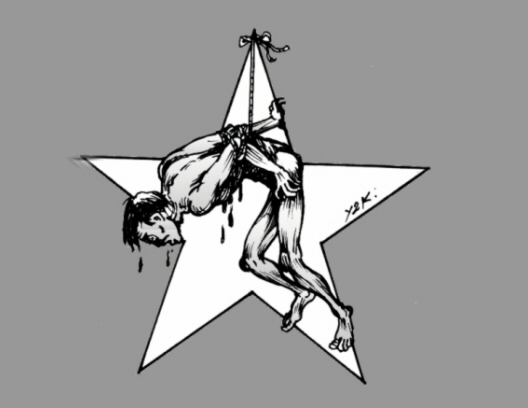
Giống như lá cờ của các nước Cộng Sản khác trên thế giới, lá cờ của Đảng Cộng Sản Việt Nam trở thành biểu tượng cho sự khổ đau, giết chóc, bắt bớ, tù đày mà người dân Việt Nam luôn tìm cách xa lánh.
108. Đảng Cộng Sản Việt Nam: Đảng Cộng Sản Việt Nam được thành lập năm 1930 theo chỉ thị của Đệ Tam Cộng Sản Quốc Tế. Tùy theo phản ứng của quần chúng, Đảng Cộng Sản Việt Nam mang nhiều tên khác nhau: đảng Cộng Sản Đông Dương, đảng Cộng Sản Việt Nam, đảng Lao Động Việt Nam và sau cùng lại là đảng Cộng Sản Việt Nam. Đảng Cộng Sản Việt Nam là một đảng chính trị được tổ chức chặt chẻ, chủ trương dùng bạo lực để cướp chánh quyền, thiết lập một chế độ độc tài đảng trị. Trong thời gian chống Pháp, những mỹ từ cao đẹp như Độc Lập, Tự Do, Bình Đẳng đã được xử dụng làm nức lòng người . Tuy nhiên trong suốt chiều dài lịch sử, đảng Cộng Sản Việt Nam đã thực hiện nhiều cuộc tàn sát đồng bào ruột thịt dã man chưa từng có trong lịch sử dân tộc như những cuộc đấu tố Cải cách ruộng đất năm 1952-1956, chôn sống đàn bà, trẻ em trong Tết Mậu Thân năm 1968. Cộng thêm là những loạt bắt bớ, tù đày, đàn áp, cướp của, lường gạt, tham nhũng liên tục áp đặt lên cuộc sống người dân. Đảng Cộng Sản Việt Nam là một đạo quân khủng bố có tổ chức gây kinh hoàng, ghê tởm trong lòng người dân Việt, đã và đang giết chết những giá trị tinh thần cao quý của dân tộc. Ngày nay nói tới đảng Cộng Sản Việt Nam người ta nghĩ đến một đảng độc tài sắt máu, những âm mưu thủ tiêu, rình mò, bắt bớ, những đàn áp dã man, những nạn nhân với tiếng kêu than nghẹn ngào uất nghẹn, những quyết định đi ngược lại tiến hóa dân chủ của nhân loại. Nói tới đảng viên đảng Cộng Sản Việt Nam người ta nghĩ đến những người thất học nhưng có thể nói không ngừng những đề tài mâu thuẩn, xa thực tế. Người ta nghĩ đến những những cán bộ chuyên rình mò tìm cách bắt bớ người dân, thích ăn hối lộ và trả thù hèn hạ. Người ta cũng nghĩ đến những đảng viên tham nhũng, sa đọa vào bậc nhất trên thế giới.
Khi viết về mình, đảng Cộng Sản Việt Nam đã tự phê bình như sau: "Đi và cuộc cách mạng xã hội chủ nghĩa, Đãng ta phạm nhiều sai lầm nghiêm trọng và kéo dài, nhất là trong lĩnh vực lãnh đạo và chỉ đạo kinh tế, mà nguyên nhân chủ yếu là do chủ quan, duy ý chí vi phạm quy luật khách quan, vừa nôn nóng, ảo tưởng, lại vừa bảo thủ, trì trệ."*. Một nhóm gồm những người phạm nhiều sai lầm nghiêm trọng và kéo dài trong lãnh vực lãnh đạo và kinh tế mà lại tự phong cho mình là một đảng lãnh đạo đất nước, cấm đoán mọi lời chỉ trích phê phán của người dân. Rồi họ dùng bạo lực bắt mọi người tuân thủ sự lãnh đạo của họ bất kể đến sự hạnh phúc, an vui của người dân, bất kể đến sự nguy hại cho đất nước, miễn sao cái đảng tham nhũng của họ giữ vững được địa vị độc tài là thỏa chí. Tệ hại hơn nữa, ngày nay đảng Cộng Sản Việt Nam liên tục bán đất liền, nhượng hải đảo cho đế quốc Trung Cộng. Thuyền bè đánh cá của dân Việt liên tục bị Hải quân Trung quốc bắn chìm trong lãnh hải Việt Nam mà đảng Cộng Sản Việt Nam vẫn im lặng, không dám lên tiếng để bảo vệ quyền lợi chíng đáng của dân tộc Việt Nam.
Những chính sách mà đảng Cộng Sản Việt Nam thường áp dụng:
- Xúi giục dân chúng nổi dậy cướp chánh quyền với chiêu bài đánh Pháp, đuổi Nhật, chống Mỹ cứu nước.
- Tranh đấu cho giai cấp vô sản, tiêu diệt các giai cấp khác, rồi đảng Cộng Sản dùng bạo lực nắm quyền không qua các cuộc lựa chọn công bằng, không qua các cuộc bầu cử công minh.
- Dùng bạo lực Cách Mạng để giải quyết vấn đề với chủ trương giết lầm hơn thả lầm.
- Kêu gọi kết hợp, rồi tiêu diệt mọi đảng phái yêu nước không có cùng đường lối với đảng Cộng Sản.
- Dùng cứu cánh biện minh cho phương tiện. Nghĩa là đảng Cộng Sản sẳn sàng dùng mọi phương tiện tàn ác nhất miễn đạt được mục tiêu thì thôi.
- Sẵn sàng theo sự phân công của Cộng Sản quốc tế, dù phải chà đạp lên quyền lợi quốc gia.
- Cô lập dân chúng với mọi nguồn thông tin từ bên, áp dụng chính sách ngu dân. Chánh phủ nắm hết mọi nguồn thông tin và sẵn sàng bóp méo mọi tin tức phát đến dân chúng.
- Dùng khủng bố tàn sát tập thể, đàn áp để tạo áp lực lôi kéo quần chúng.
- Dùng những phần tử dốt nát để dễ sai khiến thực hiện chỉ thị đảng.
The Vietnamese Communist Party (VCP): The VCP was created in 1930, by order of the 3rd International Communist. Depending on the reaction of the Vietnamese, the VC party carried different names: the Indochina Communist Party, the Vietnamese Communist Party, the Vietnamese Labor Party and finally back to the Vietnamese Communist Party. The VCP is a political party that is very well organized and uses violent force to gain the central power to build a regime of dictatorial party control. During the fight against the French, the VCP used beautiful terminology such as Independence, Freedom, Equality, stirring people’s hearts. But over the course of history, the communists have carried out many massacres of their own people, reaching levels of brutality that never before seen in Vietnam. Among those are the mass murders connected to the Land Reform during 1952 to 1956, and burying women and children alive in Hue during the 1968 Tet Offensive. In addition are endless waves of arrest, imprisonment, oppression, torturing, looting, deception, and bribery that continue to wash over our people. The communists are organized terrorists whose goal seems to be the destruction of the valuable spiritual characteristics of the Vietnamese. When thinking of the communists, the Vietnamese think of cruel gangsters who enjoy killing, of secret plots, of spying, arresting, of cruel oppression, of voiceless, innocent victims, of the decisions that are against the progress of mankind. People also think of the mandarins who have corrupted their office, who occupy their offices only to take bribes.
When describing about themselves in one of their history books, the communists have written “Going into the socialist revolution, our Party admits to many serious and consistent mistakes, especially in management and economics, whose main causes are near-sightedness, idealism, violation of natural laws, conservativeness, and hesitation” *. One can see clearly here a group of people with many serious and consistent mistakes in management and economics declare themselves as the leaders of the country, forbidding all criticism from people. They use violent force to rule the people regardless of the benefits to the people or the country, as long as they can keep their dictatorial power.
These are their most practical policies:
- Inciting people to rise up to steal the government with the theme " Fight French, expel Japanese " or " Fight American to save the country ".
- Fighting for the proletarian class; destroy other classes.
- Using revolutionary violence to solve problems with a preference for killing by mistake rather than releasing by mistake.
- Destroying other patriotic parties if they do not follow the communist party.
- Using final goals to justify means. The communist party could use the worst cruelty means as long as they see it as advancing them toward their goal.
- Being ready to follow the instructions from the international communists, even if they will damage national welfare.
- Isolating people from all information sources. Practicing the policy of obscurantism (make people dumb). The government controls all the mass media and distorts the information before releasing it to the public.
- Using terrorism and violence to force people to follow them.
- Using ignorant and bad people so the communist party can easily control and instruct them.
Le Parti Communiste Viêtnamien (PCV): Le PCV a été créé en 1930, par ordre de la 3ième Internationale Communiste. En fonction de la réaction des viêtnamiens, le parti communiste viêtnamien porta des noms différents: le Parti communiste d’Indochine, le parti communiste viêtnamien, le parti des travailleurs viêtnamiens pour retrouver à la fin la dénomination parti communiste viêtnamien. Le PCV est un parti politique qui est très bien organisé et qui utilise la force violente pour gagner le pouvoir central, pour bâtir un régime de contrôle dictatorial du parti. Au cours de la lutte contre les français, le PCV utilisa des mots magnifiques tels que l'indépendance, liberté, égalité, pour attirer le peuple. Mais au cours de l'histoire, les communistes ont procédé à de nombreux massacres de leur propre peuple, atteignant des niveaux de brutalité qui n'avaient jamais été vus auparavant au Viêt-Nam. Parmi ceux-ci les massacres de masse liés à la réforme foncière au cours des années 1952 à 1956, l’enterrement des femmes et des enfants vivants à Huê lors de l'offensive du Têt en 1968, en plus des vagues sans fin de d'arrestations, d'emprisonnement, d'oppression, de torture, de pillages, de tromperie et de corruption qui continuent de déferler sur notre peuple. Les communistes sont des terroristes organisés dont l'objectif semble être la destruction des grandes valeurs spirituelles viêtnamiennes. Lorsque les viêtnamiens pensent aux communistes, ils pensent à des bandits cruels qui aiment tuer, comploter secrètement, espionner, arrêter, opprimer des victimes innocentes et sans voix et prendre des décisions qui sont à l’encontre du progrès de l’humanité. Les gens pensent également aux mandarins qui ont corrompu leurs administrations qui les occupent seulement pour prendre leurs pots-de-vin.
Les communistes ont écrit dans un de leurs livres d’histoire « En entrant dans la révolution socialiste, notre parti reconnaît avoir commis de nombreuses erreurs graves et conséquentes, notamment dans la gestion et l’économie dont les causes principales sont la myopie, l’idéalisme, la violation des lois naturelles, le conservatisme et l’hésitation »*. On voit clairement ici un groupe de personnes ayant commis de nombreuses erreurs graves et persistantes dans la gestion et l'économie se déclarer dirigeants du pays et interdisant toute critique du peuple. Ils utilisent la force violente pour diriger le peuple sans tenir compte des intérêts de la population ou du pays, tant qu'ils peuvent garder leur pouvoir dictatorial.
Voici leurs pratiques politiques les plus utilisées:
- Inciter les gens à se dresser à voler le gouvernement avec le thème « Combattre le français, expulser le Japon »" ou « Combattre les américains pour sauver le pays ».
- Se battre pour la classe prolétarienne; détruire les autres classes.
- Utiliser la violence révolutionnaire pour résoudre les problèmes avec une préférence pour le meurtre par erreur plutôt que de libérer par erreur.
- Détruire les autres partis patriotiques s'ils ne suivent pas le parti communiste.
- La fin justifie les moyens. Le parti communiste peut utiliser les moyens les plus cruels tant qu'il y voit un moyen de le faire progresser vers son objectif.
- Etre prêt à suivre les instructions données par l’internationale communiste, même si elles nuisent au bien-être national.
- Isoler les gens de toutes les sources d'information. Pratiquer la politique de l'obscurantisme (rendre les gens muets). Le gouvernement contrôle tous les médias de masse et fausse l'information avant de la libérer au public.
- Utiliser le terrorisme et la violence pour forcer les gens à les suivre.
- Utiliser des gens ignorants et mauvais de sorte que le parti communiste puisse facilement les contrôler et les instruire.
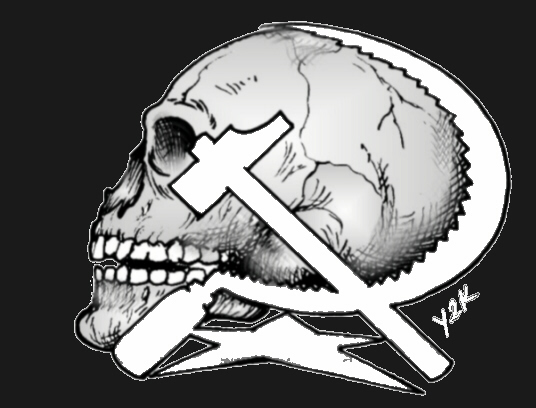
Biểu tượng búa liềm của đảng Cộng Sản Việt Nam trở thành hình ảnh của của sự giết chóc, của hận thù qua nhiều cuộc tàn sát đồng bào vô tội.
109. Đảng Cộng Sản trá hình: Với chủ trương tàn bạo, mất nhân tính như trên, đảng Cộng Sản không được sự ủng hộ của nhân dân Việt Nam. Năm 1951, đảng Cộng Sản Việt Nam tự giải tán rồi ban lãnh đạo âm thầm thành lập đảng Lao Động Việt Nam tức là đảng của nhân dân lao động để lừa dối người dân. Họ chủ trương đánh Pháp, đuổi Nhật để huy động sức lực, tài lực của nhân dân, nhưng họ cũng cấu kết với người Pháp bán đứng và tiêu diệt các đảng phái và các thành phần yêu nước khác. Mãi đến năm 1976, khi đã cưỡng chiếm miền Nam, đặt ách thống trị lên cả nước, họ mới dám lấy lại tên thật là đảng Cộng Sản Việt Nam. Ban đầu người Cộng Sản tuyên bố là họ chiến đấu cho người nghèo, cho giai cấp vô sản. Nhưng về sau, họ giành độc quyền chiếm giữ những chức vụ quan trọng trong xã hội và trở thành những người giàu có nhất do lợi dụng quyền thế, cướp được của xã hội và của người dân. Bài học Cộng Sản ở Việt Nam và các nước khác cho thấy rằng người cộng sản chỉ lợi dụng chủ thuyết Cộng Sản để nắm quyền lực mà không phải qua những cuộc bầu cử công bằng, không qua sự lựa chọn của người dân. Họ không hề yêu nước, thương dân vì khẩu hiệu của họ là "Vô gia đình, vô tổ quốc, vô tôn giáo". Người cộng sản cũng không thực sự chiến đấu cho nhân dân lao động hay cho giai cấp vô sản như họ rêu rao. Bởi vì khi họ đã cướp được chính quyền, họ bóc lột người dân lao động tàn tệ hơn tất cả các thể chế khác và người cộng sản trở thành những công dân giàu có, đầy quyền hành trong khi đại đa số nhân dân lao động đói nghèo, cùng khổ.
The disguised Communist Party: The Vietnamese did not support the communist party with its cruel and inhumane policies. In 1951, the Communist Party had to dissolve themselves and secretly formed the Vietnamese Labor Party, that is, the party of the working class. They set forth strategies for fighting the French and expel the Japanese by mobilizing all material resources. Secretly, however, they betrayed nationalistic parties by giving the information about them to the French. Not until 1976, after taking over the South, did they dare use the name Communist Party to describe themselves. At first, the communists announced that they fought for the poor, for the proletarian class. But later, the communists themselves are the ones who hold the important positions in the society and become the richest by exploiting their positions. The communist lessons in Vietnam and in other countries showed that the communists just take advantage of the Communism to seize the power without going through the public election, the legal voting. They do not really serve the country or respect the people since their policies are “No family, no religion, no country”.
Le parti communiste déguisé: Les viêtnamiens n'ont pas soutenu le parti communiste avec ses politiques cruelles et inhumaines. En 1951, le parti communiste dut se dissoudre secrètement pour former le parti travailliste viêtnamien ; c'est le parti de la classe ouvrière. Ils définirent des stratégies de lutte contre les français et d'expulsion des japonais en mobilisant toutes les ressources matérielles. Secrètement, cependant, ils ont trahi les partis nationalistes en livrant des renseignements à leur sujet aux français. Ce n'est qu'en 1976, après avoir repris le Sud, qu’ils osèrent utiliser le nom de parti communiste pour se décrire. Au début, les communistes annoncèrent qu'ils s’étaient battus pour les pauvres, pour la classe prolétarienne. Mais plus tard, ceux sont eux qui détiennent les postes importants dans la société et qui deviennent les plus riches en exploitant leurs positions. Les leçons du communisme au Viêt-Nam et dans d'autres pays ont montré que les communistes ne prennent que les avantages du communisme pour s'emparer du pouvoir sans passer par le vote. Ils ne servent pas réellement le pays ou ne respectent pas le peuple puisque leur politique est « Aucune famille, aucune religion, aucun pays ». Les communistes, en réalité, ne se battent pas pour la classe prolétarienne ou pour les pauvres comme ils le déclarent. Lorsque le parti communiste est au pouvoir, il exploite la classe populaire encore plus que les autres partis politiques. La majorité du peuple est malheureux et pauvre.
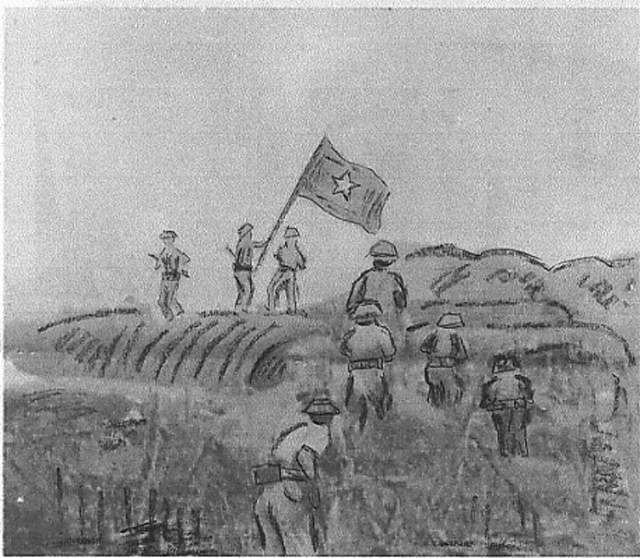
110. Chiến thắng Điện Biên Phủ, 1954: Tháng 3 năm 1954, 45 ngàn quân Việt Minh, một lực lượng chung giữa bộ đội đảng Lao Động và các đảng phái Quốc Gia yêu nước, dưới sự chỉ huy của ông Võ Nguyên Giáp, bao vây và tấn công 12 ngàn quân Pháp ở thung lũng Điện Biên Phủ. Việt Minh kéo pháo binh lên núi bắn xuống thung lũng nhu mưa, trong khi bộ binh đào chiến hào tới gần thành tấn công nhiều mặt. Sau 2 tháng đạn nổ bom rơi, quân đội Pháp đầu hàng, ký hiệp định Genève trả độc lập cho Việt Nam. Với sự đòi hỏi của Việt Cộng, hiệp định Genève, được ký kết giữa người Pháp và Cộng Sản Việt Nam chia đôi đất nước lấy sông Bến Hải, ở vĩ tuyến 17, làm ranh giới. Miền Bắc theo chế độ Cộng Sản độc tài, miền Nam theo chính thể Tự Do, Cộng Hòa.
Dien Bien Phu Victory in 1954: In March of 1954, 45,000 Vietminh soldiers, a combination force of the Communist party and other national parties such as Viet Nam Quoc Dan Dang and Dai Viet Quoc Dan Dang, with Vo Nguyen Giap as the commander, ceaselessly attacked 12,000 French soldiers in Dien Bien Phu valley. Vietminh soldiers pulled combat artillery up the mountain to fire into the valley while others dug tunnels in close proximity to the French base. After two months of fighting, the French army surrendered and signed the Geneva agreement, granting independence to Vietnam. With the request from the VC, the French and the VC signed the agreement to divide our country into two with Ben Hai River as a dividing line. The North followed the Communist dictatorial regime; the South followed the liberal Republic regime.
La victoire de Diên Biên Phu en 1954: En Mars 1954, 45.000 soldats viêt minh, une force combinée du parti communiste et des autres partis nationaux comme le Viêt Nam Quôc Dân Dang et Dai Viêt Quôc Dân Dang, avec Vo Nguyên Giap en tant que commandant, attaquèrent sans cesse 12.000 soldats français dans la vallée de Diên Biên Phu. Des Soldats viêt minh tirèrent de l’artillerie de combat dans la montagne pour faire feu dans la vallée, tandis que d'autres construisirent des tunnels à proximité de la base française. Après deux mois de combats, l'armée française céda et signa l'accord de Genève, octroyant l'indépendance au Viêt-Nam. A la demande du viêt công, les français et le viêt công signèrent un accord visant à diviser notre pays en deux avec rivière Bên Hai comme ligne de démarcation. Le Nord suivit le régime dictatorial communiste, le Sud suivit le régime libéral Républicain.
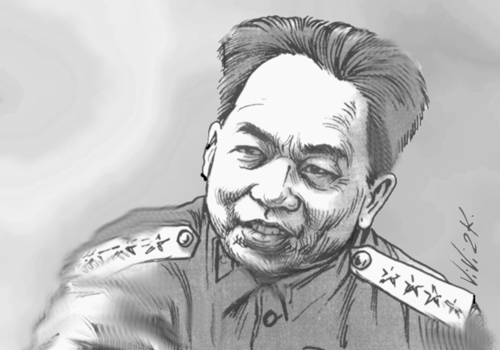
Trở Về Trang Gốc Lịch Sử Việt Nam